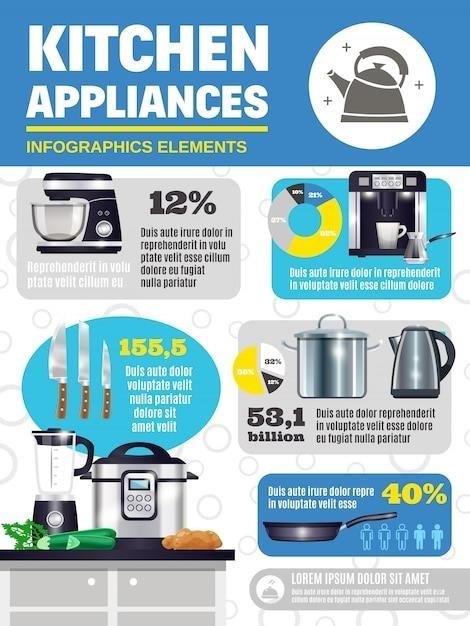Manual Transmission Vans
Manual transmission vans are a niche market, but they still hold a special place in the hearts of some drivers. These vans offer a more engaging driving experience and often provide better fuel economy than their automatic counterparts. However, they also require more driver input and can be more challenging to drive in stop-and-go traffic. In this article, we will explore the world of manual transmission vans, covering topics like their advantages, disadvantages, and the best models available today.
Introduction
In a world increasingly dominated by automatic transmissions, the manual transmission van stands as a relic of a bygone era, a testament to the enduring appeal of driver engagement and control. While automatic transmissions have become the standard in most modern vehicles, offering convenience and ease of use, manual transmissions continue to hold a special place in the hearts of driving enthusiasts. For those who appreciate the tactile experience of shifting gears, the feeling of being directly connected to the powertrain, and the inherent satisfaction of mastering the art of driving, the manual transmission van remains a compelling choice.
However, the manual transmission van is not without its challenges. The decline in popularity of manual transmissions has led to a shrinking pool of models available, and finding a van with a manual gearbox can be a daunting task. Furthermore, the perceived complexity and perceived difficulty of driving a manual transmission can deter some drivers, particularly those who are accustomed to the simplicity of automatic transmissions. Yet, for those who are willing to embrace the challenge, the manual transmission van offers a unique and rewarding driving experience.
The Basics of Manual Transmission Vans
A manual transmission van, often referred to as a stick-shift van, is a vehicle equipped with a transmission that requires the driver to manually engage gears using a clutch pedal and a gearshift lever. Unlike automatic transmissions, which automatically shift gears based on engine speed and load, manual transmissions give the driver complete control over gear selection.
To operate a manual transmission van, the driver must first depress the clutch pedal, which disengages the engine from the transmission. This allows the driver to shift the gearshift lever into the desired gear. Once the gear is selected, the driver slowly releases the clutch pedal, smoothly engaging the engine with the transmission and moving the van; The process of shifting gears requires coordination and practice, but it becomes second nature for experienced drivers.

Manual transmissions in vans typically offer a range of gears, usually five or six forward gears, allowing the driver to optimize the engine’s power and fuel efficiency for various driving conditions. The clutch pedal is essential for smooth acceleration, deceleration, and coming to a stop. Manual transmissions are known for their engaging driving experience, offering a greater sense of control and driver involvement.

Advantages of Manual Transmission Vans
Manual transmission vans offer a unique set of advantages that appeal to certain drivers. One significant benefit is improved fuel efficiency. Since manual transmissions allow for more precise control over engine speed and gear selection, drivers can optimize their driving style for better fuel economy. This is particularly beneficial for those who frequently drive in urban environments or engage in long-distance hauling.
Another advantage is enhanced driver engagement. The act of shifting gears provides a more connected and involving driving experience. For enthusiasts who enjoy the tactile feedback and control over the vehicle’s performance, a manual transmission can be a more satisfying choice. This can be especially rewarding when navigating winding roads or tackling challenging terrain.
Moreover, manual transmission vans are often more affordable than their automatic counterparts. This is due to the simpler design and construction of manual transmissions. The lower manufacturing costs can translate into lower purchase prices and potentially lower maintenance costs as well. These financial benefits can be appealing to budget-conscious drivers seeking a reliable and practical workhorse.
Disadvantages of Manual Transmission Vans
While manual transmission vans offer certain advantages, they also come with a set of disadvantages that some drivers may find less appealing. One major drawback is the increased driver workload. Manual transmissions require constant attention and coordination between the clutch pedal, gearstick, and throttle. This can be tiring and stressful, especially in stop-and-go traffic or during long drives. For drivers seeking a more relaxed and effortless driving experience, an automatic transmission might be a better choice.
Another disadvantage is the potential for driver error. Shifting gears improperly can lead to stalling, jerky movements, or even damage to the transmission. This requires a greater level of skill and experience, which may not be suitable for all drivers. For novice drivers or those who are unfamiliar with manual transmissions, the learning curve can be steep and potentially frustrating.
Additionally, manual transmission vans can be less convenient for certain driving situations. For instance, navigating heavy traffic or parking in tight spaces can be more challenging with a manual transmission. The constant engagement of the clutch pedal and gear shifting can add to the overall stress and fatigue experienced by the driver. In these scenarios, the convenience and ease of use of an automatic transmission can be highly appreciated.
Manual Transmission Vans vs. Automatic Transmission Vans
The choice between a manual and automatic transmission van ultimately depends on individual preferences and driving needs. Manual transmissions offer a more engaging and direct driving experience, allowing drivers to have greater control over the vehicle’s performance. They typically provide better fuel economy compared to automatic transmissions, as they don’t have the same power losses associated with torque converters. However, manual transmissions require a higher level of driver skill and can be more demanding in stop-and-go traffic or challenging driving conditions.
Automatic transmissions, on the other hand, provide a more convenient and effortless driving experience. They handle gear changes automatically, eliminating the need for manual intervention. This can be particularly beneficial for drivers who prefer a relaxed and stress-free driving experience. Automatic transmissions are also generally easier to drive in heavy traffic or during parking maneuvers. However, automatic transmissions can be less fuel-efficient than manual transmissions and may not offer the same level of driver engagement.
In conclusion, the choice between a manual and automatic transmission van boils down to individual priorities. If you value a more engaging and fuel-efficient driving experience, a manual transmission van may be a good option. If you prioritize convenience and ease of use, an automatic transmission van might be a better choice. Ultimately, the best decision will depend on your specific driving needs and preferences.
Choosing the Right Manual Transmission Van
Selecting the perfect manual transmission van requires careful consideration of several factors to ensure it aligns with your specific needs and preferences. First, determine the size and capacity you require. Do you need a compact van for urban errands or a larger model for hauling cargo or transporting passengers? Next, assess your budget. Manual transmission vans often offer a more affordable option compared to automatic transmissions, but it’s crucial to establish a realistic price range.
Consider the purpose of the van. If you’ll be using it for frequent city driving, a smaller, more maneuverable van with a shorter wheelbase might be ideal. For long-distance travel or heavy-duty tasks, a larger van with a powerful engine and robust suspension is recommended. Evaluate your driving experience and comfort with manual transmissions. If you’re a seasoned driver with a preference for manual transmissions, you might be more comfortable with a van that offers a more engaging driving experience.
Finally, research available models and compare features, fuel efficiency, and reliability. Consider the van’s safety features, cargo space, and overall comfort for both the driver and passengers. By carefully considering these factors, you can ensure you choose a manual transmission van that meets your specific requirements and brings you years of reliable and enjoyable driving.
Popular Manual Transmission Van Models
While manual transmission vans are becoming increasingly rare, a few manufacturers still offer models with this option, catering to those who value a more engaging driving experience and appreciate the potential for better fuel economy. One notable example is the Ram ProMaster, which offers a 3.0-liter EcoDiesel engine paired with a six-speed manual transmission. This combination provides a strong balance of power and efficiency, making it a solid choice for those seeking a capable work van.
Another option is the Ford Transit, which offers a manual transmission option with its 3.5-liter V6 engine. The Transit is known for its spacious interior and versatile cargo capacity, making it a popular choice for both businesses and individuals. For those seeking a more compact van, the Mercedes-Benz Sprinter also offers a manual transmission option. The Sprinter is known for its premium build quality and advanced technology features, making it a luxurious choice for those who demand the best.
While the selection of manual transmission vans may be limited, these popular models demonstrate that there are still options available for those who value this type of driving experience. As technology continues to advance, it remains to be seen whether the manual transmission will continue to be a viable option in the van market. However, for now, these models offer a unique blend of affordability, efficiency, and driving engagement that continues to appeal to a dedicated segment of drivers.
The Future of Manual Transmission Vans
The future of manual transmission vans is uncertain, as the automotive industry continues to prioritize automated driving experiences and fuel efficiency; While some manufacturers still offer manual transmission options in their van models, the trend suggests a gradual decline in their availability. This shift is driven by a number of factors, including the increasing popularity of automatic transmissions, which offer greater ease of use and driver comfort, particularly in stop-and-go traffic.
Moreover, the pursuit of fuel efficiency has led to the development of advanced automatic transmissions with multiple gears and sophisticated control systems that can optimize fuel consumption. These advancements have made automatic transmissions more appealing for both commercial and personal use, further diminishing the demand for manual transmissions. However, a dedicated segment of drivers still values the engaging driving experience and potential for better fuel economy offered by manual transmissions.
The future of manual transmission vans will likely depend on the continued demand from this niche market. If enough drivers express a desire for this type of driving experience, manufacturers may continue to offer manual transmission options in their van models. However, if the demand for manual transmissions continues to decline, it is possible that they will eventually disappear from the van market altogether. Only time will tell whether the manual transmission will survive in the evolving landscape of the automotive industry.
In conclusion, manual transmission vans offer a unique driving experience that appeals to a specific segment of drivers. While they provide a greater sense of control and can potentially offer better fuel economy, their demanding nature and declining popularity in the automotive industry suggest a challenging future; The increasing focus on automated driving technologies and fuel efficiency is driving the adoption of automatic transmissions, which are generally considered more convenient and efficient.
Despite the dwindling availability of manual transmission vans, enthusiasts who value the engaging driving experience and potential for better fuel economy will continue to seek them out. The future of manual transmission vans remains uncertain, but their legacy as a symbol of driver involvement and a connection to the mechanical heart of the vehicle will likely endure. Ultimately, the decision of whether to choose a manual or automatic transmission comes down to personal preference and driving habits. For those who prioritize driver engagement and a more engaging driving experience, manual transmission vans remain a compelling option.
However, for drivers who prioritize convenience, comfort, and fuel efficiency, automatic transmissions offer a more practical and readily available solution. The evolution of the automotive industry is shifting towards automated driving technologies, which suggests that manual transmission vans may eventually fade into the annals of automotive history. However, their legacy as a testament to driver involvement and a connection to the mechanical heart of the vehicle will likely endure.
Resources
For those seeking further information on manual transmission vans, several resources are available online and in print. Websites like Car and Driver and MotorTrend provide comprehensive reviews of new and used vehicles, including those with manual transmissions. Online marketplaces like eBay and Craigslist often feature listings for manual transmission vans, offering a diverse range of models and prices. Dedicated van enthusiast forums and communities can provide valuable insights and advice from experienced owners.
Specialized publications like “The Autopian” offer unique perspectives on the history and evolution of manual transmissions in various vehicle types, including vans. For those interested in purchasing a manual transmission van, online car retailers like Carvana offer a convenient way to browse inventory and arrange delivery. Additionally, local dealerships and used car lots can provide personalized guidance and support throughout the buying process. By exploring these resources, potential buyers can gain a better understanding of the available options, pricing, and potential challenges associated with owning a manual transmission van.
Remember to carefully research the vehicle’s history, condition, and any potential maintenance requirements before making a purchase. With careful consideration and thorough research, finding a reliable and enjoyable manual transmission van can be a rewarding experience for those who appreciate the unique driving dynamics and connection to the vehicle’s mechanics.





























Leave a Comment